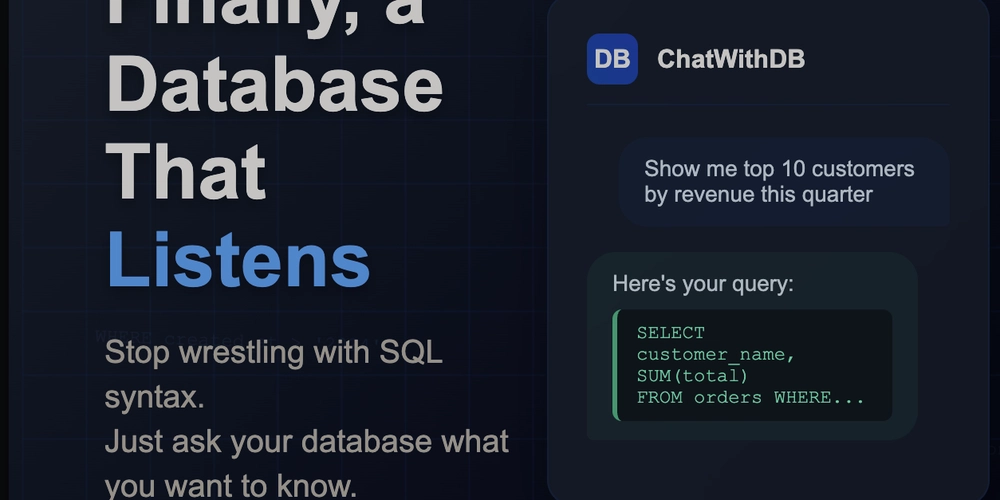Remember that moment when you’re deep in debugging at 2 AM, staring at a gnarly database schema, and you just want to ask: “Hey DB, which users haven’t logged in for the past 30 days?” Instead, you end up crafting some SQL monstrosity, second-guessing your joins, and probably making three syntax errors before you get it right.
What if I told you there’s a tool that lets you literally have a conversation with your database? Meet ChatWithDB – and no, it’s not just another query builder with a fancy UI.
The “Aha!” Moment
Last week, I was helping a junior developer on my team who was struggling with a complex analytics query. You know the drill – multiple tables, date ranges, aggregations, and that special kind of panic that comes with production data.
Instead of spending 30 minutes walking through SQL syntax, I opened ChatWithDB and typed: “Show me the top 10 customers by revenue in the last quarter, but exclude refunded orders.”
Boom. Perfect query. The junior dev’s jaw dropped. Mine did too, honestly.
What Makes This Different?
Here’s the thing – we’ve all seen “natural language to SQL” tools before. Most of them work great for demo databases with clean, obvious table names like “customers” and “orders.” Real databases? Not so much.
ChatWithDB actually gets it. It understands your weird legacy column names, your unconventional relationships, and even that one table everyone’s afraid to touch (you know the one). The AI learns your database structure and adapts to how your team actually organizes data.
Real Talk: Where It Shines
For the SQL wizards: You’re still faster at writing complex queries by hand, but ChatWithDB is incredible for exploring unfamiliar schemas or when you need to explain queries to non-technical stakeholders.
For the “I know enough SQL to be dangerous” crowd: This is your new best friend. No more copy-pasting from Stack Overflow and hoping for the best.
For data analysts who speak business, not database: Finally, you can ask questions the way you think about them, not the way MySQL wants you to think about them.
The Surprisingly Smooth Setup
I expected the usual database connection nightmare – you know, firewall rules, connection strings, and at least two Slack messages to the DevOps team.
Nope. Point it at your database (they support all the major ones), and it spends a few minutes learning your schema. That’s it. No complex configurations, no agents to install.
What I Actually Use It For
- Quick data exploration: “How many users signed up each month this year?”
- Sanity checks: “Are there any orders without customers?” (There were. Yikes.)
- Explaining queries to stakeholders: The AI can break down complex queries in plain English
- Learning new schemas: When I inherited a project with zero documentation (classic), ChatWithDB helped me understand what everything actually meant
The Honest Drawbacks
Look, it’s not perfect. Sometimes it gets confused by really complex business logic or heavily normalized schemas. And if your database is a complete disaster with no naming conventions… well, even AI has limits.
But here’s what I appreciate: when it’s not sure about something, it asks. It doesn’t just guess and give you wrong results.
Why This Matters for Our Industry
We spend way too much time translating between “what the business wants to know” and “how the database stores that information.” Tools like ChatWithDB aren’t replacing SQL skills – they’re removing the friction that keeps good developers away from data exploration.
Plus, let’s be honest: how many times have you written the same basic queries over and over? Why not just ask for what you want?
Give It a Shot
If you’re curious, ChatWithDB has a free tier that’s perfect for trying it out on a test database. Even if you’re a SQL ninja, it’s worth seeing how it interprets your schema.
And if you’re teaching someone SQL or working with non-technical team members who need data insights, this tool might just save your sanity.
Have you tried any AI-powered database tools? What’s been your experience with natural language queries? Drop a comment – I’m genuinely curious about what’s working (or not working) for other developers.



